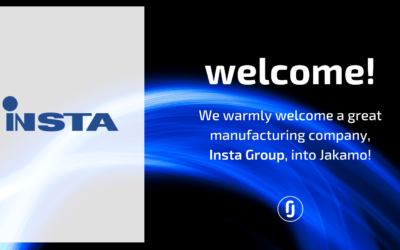Designing the Digital Supply Chain


The latest organization research has recognized the role of digital organization design as a crucial part of strategic management. In management literature, connectivity may be seen as an existing capability for at least two decades. But when the software started to move into the cloud the design of organizations faced pressure for change. Business ecosystems are here to stay.
Boston Consulting Group (BCG) and Massachusetts Institute of Technology (MIT) published an excellent article (2016) on how successful companies change their business and operation models as digital technologies reshape the way that they do business. The article points out some exciting findings that should be elaborated further from an inter-organizational angle.
One of the findings was that many companies have used the people-process-technology framework to manage and coordinate changes. The second interesting finding was that successful companies started to use digital solutions already at the beginning of the 2000s. Therefore, those companies have a significant advantage to approach the platform economy which cloud technology provides.
Companies are often implementing digital technologies for two purposes – into their products and services and their interactions with employees, customers, suppliers, and other stakeholders. The finding was that both types of digital transformation require a redesign of business and operating models.
The research points out five dimensions where the digital transformation takes place: customer experience, product and service offerings, ecosystems, control and alignment mechanisms, and ways of working. Let’s have a look at these dimensions in inter-organizational angle – especially what it means for the supply chain.
Customer experience
Digital companies address the total customer experience. We have recognized that winning companies in the manufacturing ecosystem should be able to manage the design and engineering changes much more smoothly and rapidly compared with other companies. Customers require improvements in a shorter time. If the company is concentrating only on its internal units, the result is not desirable from a customer’s point of view. The change should be interacted and managed fast and precisely with the supply chain.
Digital companies rely on easy access to customer data. All the data on the customer should be available for the employees who are creating value for the customer. Because a major part of the value is created in the supply chain – in business relations with suppliers – the internally created data is not enough to create the most valuable experience for the customers. The accurate and symmetric data and transparent and on-going interaction need to be available for all persons who are involved in creating the customer experience.
Product and service offerings
Today products and services are integrated with different sensors and processors and connected to the cloud through wireless networks. Monitoring and analytics are new values which can be delivered to the end-customer. The machines can more and more communicate with each other and deliver productivity to the customer.
This improvement enables companies to have relevant and real-time data related to their own production and the machines customers are using. The same kind of visibility and availability for the relevant data should be expanded to the information which is shared in the supply chain. To act fast and reach advantage in flexibility, the information that is shared in the supply base should be available and visible anywhere and anytime for the people who are creating value for the end-customer.
Ecosystem
Ecosystems are often recognized and developed towards the customer base. Different kinds of digital communities are built with end-customers. The relevant data is gathered directly from the end-users of the product. It gives the manufacturer a new kind of base to developing the products and services, and new value for the customers.
For some reason, less attention is given for the ecosystem that exists in the supply chain – the companies which create the major value to the end-product. I believe that the companies who develop their supplier ecosystem with modern digital solutions to operate smoothly and fast will increase customer satisfaction by improved quality, decreased costs and shorter lead-times.
Control and Alignment Mechanism
Salesforce adopted a visionary strategic thinking mechanism called V2MOM (vision, value, methods, obstacles, measures) and it has been implemented in many other organizations as well. This simple concept allows the organization to focus on right targets and actions in all organization levels which is crucial for reaching high-level results.
This same concept could be easily expanded into supply chain management. Think about it, if these values would be defined commonly within the strategic supplier relationships, how much bigger the benefits and impacts could be for the end-customer. The concept is there, only the context needs to be changed from internal units to external relationships.
Ways of working
As the article mentions, the ways of working describe how people in the company work together. Today, the clock speed is one of the key factors that companies are trying to tighten. Digital solutions have brought a lot of improvements to this area, not only internally, but also in the supply chain. Changing the ways of working requires a cultural change besides the digital transformation. Without designing the cultural change in the ways of working, the digital transformation typically fails. But if the cultural change is in place, the results are impressive.
Changing the ways of working in the supplier ecosystem should be on the agenda of all manufacturing companies who are delivering complex systems for their customers. It will improve their revenues, productivity, customer & supplier satisfaction and speed of their business on a global scale.
Summary
As a summary, I want to present five dos elaborated from the article to be discussed in your manufacturing company.
- Redesign your design and engineering change request processes in your supply chain to reach shorter lead-times. Concentrate on quick responses, accurate data, and transparent interaction.
- Make sure that the selectively shared information and interaction within the supply chain are available and visible for all persons who are creating value for the customer – also for the suppliers.
- We live in the era of ecosystem economy – choose the right ecosystem for your company. The best choice is to commit with a vertical ecosystem which is focusing on the challenges that exist particularly in the industry where your company is acting.
- Implement a simple strategic concept (e.g. V2MOM) to commit your suppliers to establish the highest possible value for your customers.
- Give attention to cultural change when redesigning your supply chain with new digital technologies.
Jarl Matti Anttila
CMO & Co-founder of Jakamo
E-book: Supplier Experience
Supplier Experience – The Fundamentals of Modern Supplier Collaboration is a carefully crafted guide that presents the concept of Supplier Experience through six practical lenses. Download your free copy!
Recent Posts
- Jakamo Business Central ERP Connector Now Available in Microsoft Marketplace
- Insta Group strengthens supplier collaboration and sustainability efforts with Jakamo
- TECHSAVVY MEDIA: Supply chain expert – Relationships with your suppliers are key to greener manufacturing
- Fastems Advances Supply Chain Sustainability with Jakamo
- Jakamo achieves ISO 27001 certification






